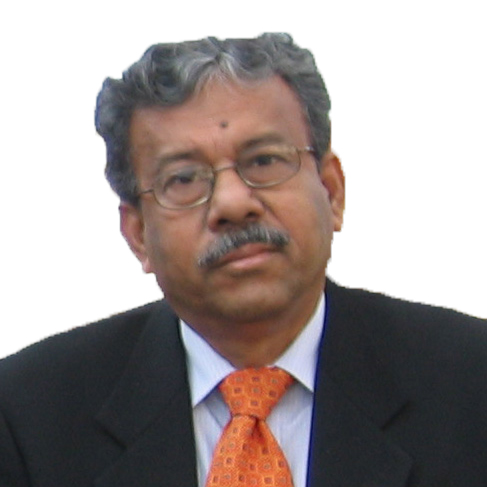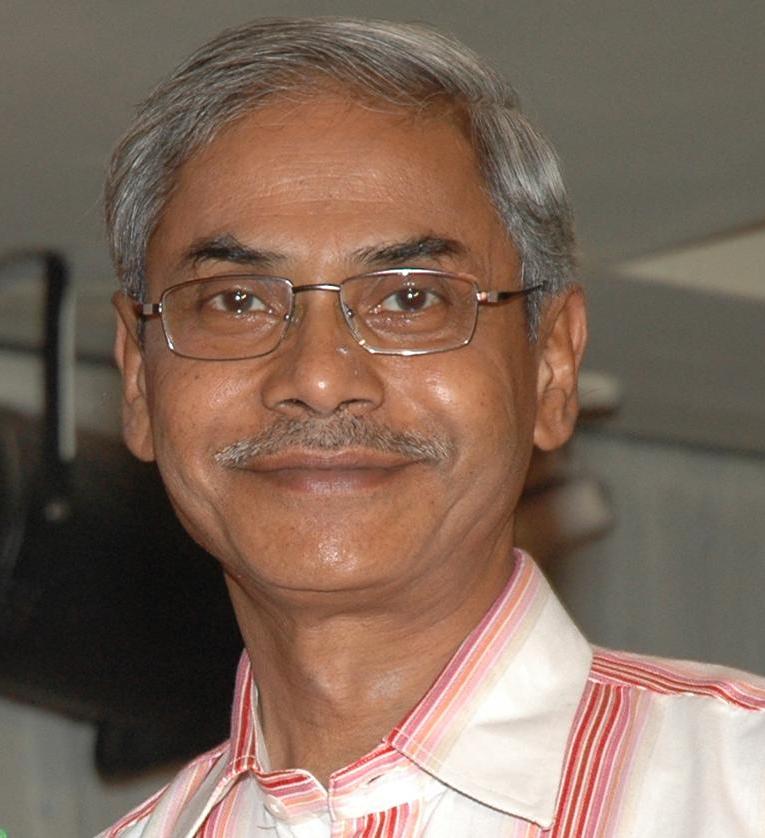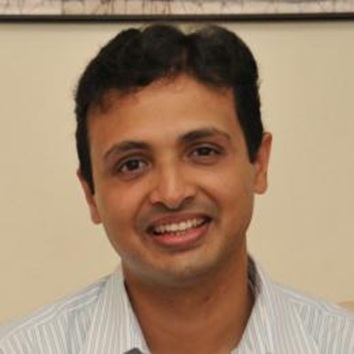Keynotes/Tutorials
|
| ||
|
School of Information Technology, Deakin University, Australia |
Target Audience: Masters/PhD students, researchers interested in secure protocol design Outline: RFID is a technology that enables the non-contact, automatic and unique identification of objects using radio waves. RFID technology was first used in the IFF (Identify Friend or Foe) aircraft system during World War II. However, its use for commercial applications has recently become attractive with RFID technology seen as the replacement for the optical barcode system that is currently in widespread use. It is projected that the RFID market will be worth more than US$25billion in 2018. However, for this growth and proliferation of RFID systems to be achieved, security and privacy concerns relating to RFID communication need to addressed.RFID systems require unique security requirements and privacy properties to be guaranteed. The achievement of security and privacy in RFID systems is challenging due to the computational constraints on low-cost RFID tags. In addition, it is vital that any proposed security scheme is compliant with RFID industry standards such as the EPC Class-1 Gen-2 standard that specifies that tags are required to implement only a cyclic redundancy check (CRC) and pseudo random number generator (PRNG). In such RFID systems, it is estimated that there is approximately only 2.5K to 5K additional gates available for security purposes on an EPC Class-1 Gen-2 compliant RFID tag. This is insufficient for standard cryptographic techniques such as RSA, hash functions. Further, the limited processing and storage capabilities of RFID tags limit the effective use of cryptographic techniques. Although cheaper cryptographic alternatives such as Elliptic Curve Cryptography (ECC) exist, the practical implementation of ECC is still an open research problem. For instance, implementation of ECC would require between 8.2 K and 15 K equivalent gates. These factors make the design of secure and private RFID communication protocols a non-trivial problem. In this tutorial, the topics covered will include: security and privacy properties in RFID systems; constraints on cryptographic primitives; secure protocol design with focus on mutual authentication, secure search, ownership transfer and grouping proofs; formal security analysis of RFID security protocols and open research problems and future research directions. This tutorial will also cover topics related to information leakage in RFID systems and the use of number theoretic properties, in particular minimum disclosure properties for effective design of RFID communication protocols. |
|
|
|
Dr. Robin Doss joined the School of Information Technology, Deakin University, Australia, in 2003 and is currently the Associate Head of School (Development & International). Prior to joining Deakin University, he was part of the technical services group at Ericsson Australia and a research engineer at RMIT University. Robin received a Bachelor of Engineering in Electronics and Communication Engineering from the University of Madras, India in 1999, and a Master of Engineering in Information Technology and a PhD in Computer Systems Engineering from the Royal Melbourne Institute of Technology (RMIT), Australia in 2000 and 2004 respectively. His PhD thesis was on mobility prediction for next generation wireless networks. In 2007, he also completed a Graduate Certificate in Higher Education from Deakin University. Dr. Doss is a senior researcher within the network security and computing research lab at Deakin University and has made significant contributions in the areas of network security, network design and protocol development for wireless networks. His research has been funded by the National Security Science and Technology (NSST) branch of the office of national security in collaboration with the Defence Signals Directorate (DSD), the Australian Research Council (ARC) and industry partners. Dr. Doss was part of the team of researchers funded through the Research Support for Counter Terrorism (RSCT) initiative of the Australian government to provide advice to the department of Prime Minister and Cabinet. In 2006, Dr. Doss was hosted as a visiting scientist by IBM Research at their Zurich Research Laboratory (ZRL), Switzerland where he contributed to the 'e-Sense' project (http://www.ist-esense.org/). Dr. Doss has served as the chair of several international symposia, workshops and conferences (ISSNIP RFID 2009, ISSNIP RFID2011, IEEE ISNIP RFID 2013, IEEE WiMob IoT2013) in the areas of wireless communication and network security. He serves on the technical programme committee for several conferences on wireless communications and is a regular reviewer for international journals and PhD theses. He is also an affiliate researcher with the ARC Research Network on Intelligent Sensors, Sensors Networks and Information Processing (ISSNIP). He has published widely and his research results have been published in the IEEE Transactions on Parallel and Distributed Systems, IEEE Transactions on Information Forensics and Security, IEEE Communications Letters, Computer Networks and Ad Hoc Networks among others. |
|
|
| ||
|
|
Outline: It is becoming increasingly important for enterprises to have a well-defined privacy policy, to establish customer trust and to prevent misuse of privacy data and avoid litigation. Many standards exist for the publication of the privacy policy of an enterprise, which may be more complex than a simple 'allow' or 'deny' rule. The privacy policy may have rules that specify obligations to be executed in the case of certain data access. Currently these obligations are executed manually, with the inherent defects of not being scalable or auditable. In this talk, we discuss the architecture and technology for the automated execution of the obligations associated with a privacy policy that has been developed at IBM India Research Lab. We also present a prototype solution for the obligation enforcement, using IBM Content Manager as the data repository and IBM Record Manager for the obligation enforcement. The system also logs audit information and generates audit trails, to support auditing of the obligation enforcement. We also present a generic architecture for obligation execution associated with different kinds of policies. |
|
|
|
Dr. Mukesh K. Mohania received his Ph.D. in Computer Science & Engineering from Indian Institute of Technology, Bombay, India in 1995. He was a faculty member in University of South Australia from 1996-2001. Currently, he is an STSM and IBM Master Inventor in IBM India Software Lab, and leading Information Management Software and Research group. He has worked extensively in the areas of distributed databases, data warehousing, data integration, and autonomic computing. He has published more than 100 papers and also filed more than 30 patents in these or related areas. He received the best paper award for his XML and data integration work in CIKM 2004 and CIKM 2005, respectively. He received an award from IBM Tivoli Software in 2004 for his research contribution to Policy Management for Autonomic Computing product. He was also a recipient of the "Excellence in People Management" award in IBM India in 2007. He received the "Outstanding Innovation Award" from IBM Corporation in 2008 for his Context-Oriented Information Integration work, and Technical Accomplishment Award in 2009 for his Policy work. |
|
| SIRS-2014 | ||
|
|
Outline: Different components of machine intelligence are explained. The role of rough sets in uncertainty handling and granular computing is highlighted. Relevance of its integration with fuzzy sets as a stronger paradigm for uncertainty handling, in soft computing paradigm, is explained. Generalized rough sets using the concept of fuzziness in granules and sets, rough-fuzzy entropy, fuzzy equivalence partition matrix and f-information measures are defined. Their significance in tasks like case generation, clustering, measuring image ambiguity and mutual information based feature selection for efficient mining is described. Concept of fuzzy granular computing and granular fuzzy computing is explained. While rough-fuzzy case generation with variable reduced dimension is useful for mining data sets with large dimension and size, rough-fuzzy clustering is superior in terms of performance and speed. Rough-fuzzy image entropy takes care of the fuzziness in boundary regions as well as the rough resemblance among nearby pixels and gray levels. Effectiveness of these features is demonstrated for image/video analysis and bioinformatics problems. The talk concludes with mentioning the future directions of research and other applications including the relevance to natural computing. |
|

|
Prof. Sankar K. Pal (www.isical.ac.in/~sankar) Sankar K. Pal is a Distinguished Scientist of the Indian Statistical Institute and its former Director. He is also a J.C. Bose Fellow of the Govt. of India and Chair Professor of Indian National Academy of Engineering. He founded the Machine Intelligence Unit and the Center for Soft Computing Research: A National Facility in the Institute in Calcutta. He received a Ph.D. in Radio Physics and Electronics from the University of Calcutta in 1979, and another Ph.D. in Electrical Engineering along with DIC from Imperial College, University of London in 1982. He joined his Institute in 1975 as a CSIR Senior Research Fellow where he became a Full Professor in 1987, Distinguished Scientist in 1998 and the Director for the term 2005-10. He worked at the University of California, Berkeley and the University of Maryland, College Park in 1986-87; the NASA Johnson Space Center, Houston, Texas in 1990-92 & 1994; and in US Naval Research Laboratory, Washington DC in 2004. Since 1997 he has been serving as a Distinguished Visitor of IEEE Computer Society (USA) for the Asia-Pacific Region, and held several visiting positions in Italy, Poland, Hong Kong and Australian universities. Prof. Pal is a Fellow of the IEEE, the Academy of Sciences for the Developing World (TWAS), International Association for Pattern recognition, International Association of Fuzzy Systems, and all the four National Academies for Science/Engineering in India. He is a co-author of seventeen books and more than four hundred research publications in the areas of Pattern Recognition and Machine Learning, Image Processing, Data Mining and Web Intelligence, Soft Computing, Neural Nets, Genetic Algorithms, Fuzzy Sets, Rough Sets and Bioinformatics. He visited about forty countries as a Keynote/ Invited speaker or an academic visitor. He has received the 1990 S.S. Bhatnagar Prize (which is the most coveted award for a scientist in India), 2013 Padma Shri (one of the highest civilian awards) by the President of India and many prestigious awards in India and abroad including the 1999 G.D. Birla Award, 1998 Om Bhasin Award, 1993 Jawaharlal Nehru Fellowship, 2000 Khwarizmi International Award from the President of Iran, 2000-2001 FICCI Award, 1993 Vikram Sarabhai Research Award, 1993 NASA Tech Brief Award (USA), 1994 IEEE Trans. Neural Networks Outstanding Paper Award, 1995 NASA Patent Application Award (USA), 1997 IETE-R.L. Wadhwa Gold Medal, 2001 INSA-S.H. Zaheer Medal, 2005-06 Indian Science Congress-P.C. Mahalanobis Birth Centenary Gold Medal from the Prime Minister of India for Lifetime Achievement, and 2007 J.C. Bose Fellowship of the Government of India and INAE Chair Professorship. Prof. Pal is/was an Associate Editor of IEEE Trans. Pattern Analysis and Machine Intelligence (2002-06), IEEE Trans. Neural Networks [1994-98 & 2003-06], Neurocomputing (1995-2005), Pattern Recognition Letters (1993-2011), Int. J. Pattern Recognition & Artificial Intelligence, Applied Intelligence, Information Sciences, Fuzzy Sets and Systems, Fundamenta Informaticae, LNCS Trans. Rough Sets, Int. J. Computational Intelligence and Applications, IET Image Processing, and J. Intelligent Information Systems; Editor-in-Chief, Int. J. Signal Processing, Image Processing and Pattern Recognition; a Book Series Editor, Frontiers in Artificial Intelligence and Applications, IOS Press, and Statistical Science and Interdisciplinary Research, World Scientific; a Member, Executive Advisory Editorial Board, IEEE Trans. Fuzzy Systems, Int. Journal on Image and Graphics, and Int. Journal of Approximate Reasoning; and a Guest Editor of IEEE Computer, IEEE SMC and Theoretical Computer Science. |
|
|
SIRS-2014
|
Outline: Human action recognition for automatic understanding of video clips is becoming increasingly important. With the growing need of surveillance related applications, the research in the field of action recognition has been fueled in past few years. Action recognition systems can be used for surveillance purpose and can trigger alarm whenever some suspicious activity takes place. Action recognition systems also help in creating interactive environment which can respond to the actions performed by human actors. Assisted care applications to the elderly can also make use of action recognition techniques. Other possible applications are video summarization, and content based video retrieval, etc. This talk will be in two parts. The first part will deal with action recognition from RGB video clips. It will be shown how shape based features and optical flow based motion features are extracted from the video frames. A short introduction to machine learning will be given to justify use of Support Vector Machine based approach for training the system. Results based on lab activities such as walking, sitting down, writing on board, opening a door, sliding on chair will be presented. The second part of the talk will deal with small scale actions performed while sitting down on a chair, such as typing, reading, attending phone, engaged in discussion, drinking tea, texting, stretching and dozing. The objective will be to show how a depth based camera can be effectively used for collecting 3D data and improve the recognition rates using depth and body joints data. Results will be presented on actual case studies carried out at IIT Delhi. |
|

|
Prof. K. K. Biswas did his B.Tech in Electrical Engineering from IIT Madras, followed by M.Tech in Control systems and PhD in signal estimation from IIT Delhi. After a brief stint at University of Roorkee, he joined the EE Department of IIT Delhi. He later shifted to Computer Science Engineering Department where he is currently serving as a Professor. His teaching career spans over 35 years. He has been a visiting professor at the University of Auckland, New Zealand and at the University of Central Florida, USA. He has also acted as UNESCO expert for development of curriculum at university of Nigeria. He has been collaborating with University of Oxford and University of Texas at Austin. He has been an active researcher with 15 PhD students, and more than 60 publications in reputed journals and international conferences. His current area of research interest is image and video processing, machine learning with applications in activity recognition and salient object detection. His other main research interest is handling fuzzy models in probabilistic domain. He is also working in the area of logic based knowledge representation in various domains. |
|
|
| ||
|
SIRS-2014
Case Study of a Social Interaction Assistant for Individuals with Visual Impairments |
Outline: Intelligent recognition systems bring together the strong theoretical science of machine learning and pattern recognition, with the rigorous engineering practices required for real-world end-products. Can the twain - basic and applied research - meet? This talk will attempt to provide a new perspective on this question through a case study of a Social Interaction Assistant system for individuals with visual impairments. Literature in psychology states that 65% of communication is non-verbal, which is inaccessible to individuals with visual disabilities. This presents fundamental challenges in the development of computational methods for understanding human behaviour, and the ability to effectively navigate and negotiate complex environments and social relationships, which can further be characterized by individual and contextual heterogeneity. However, advances in machine analysis of behavioural cues (e.g., gaze exchange, smiles, head nods, crossed arms, laughter) or social signals (e.g., attention, empathy, agreement) are still in their infancy. This talk will, in particular, describe two components developed for the Social Interaction Assistant: (i) Efficient conformal predictors for reliable person recognition; and (ii) Batch mode active learning for effective sample selection in video sequences. The talk will conclude with pointers to directions for future research in machine learning to achieve behavioural intelligence in real-world settings, which can be applied in a wide range of settings including smart healthcare, ubiquitous user interfaces, security and surveillance, and telecommunication. |
|

|
Dr. Vineeth N Balasubramanian is an Assistant Professor in the Department of Computer Science and Engineering at the Indian Institute of Technology, Hyderabad, India. Until July 2013, he was an Assistant Research Professor at the Center for Cognitive Ubiquitous Computing (CUbiC) at Arizona State University (ASU). He holds dual Masters degrees in Mathematics (2001) and Computer Science (2003) from Sri Sathya Sai Institute of Higher Learning, India, and worked at Oracle Corporation until 2005. His PhD dissertation (2010) on the Conformal Predictions framework was nominated for the Outstanding PhD Dissertation at the Department of Computer Science at ASU. He was also awarded the Gold Medals for Academic Excellence in the Bachelors program in Math in 1999, and for his Masters program in Computer Science in 2003. His research interests include pattern recognition, machine learning, computer vision and multimedia computing within assistive and healthcare applications. He has over 40 research publications in premier peer-reviewed venues, 3 patents under review, and has received research grants from the US National Science Foundation in these fields. He is a member of the IEEE, ACM and AAAI. |
|